8 books about Alternative History
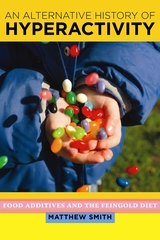
An Alternative History of Hyperactivity
Food Additives and the Feingold Diet
Smith, Matthew
Rutgers University Press, 2011
In 1973, San Francisco allergist Ben Feingold created an uproar by claiming that synthetic food additives triggered hyperactivity, then the most commonly diagnosed childhood disorder in the United States. He contended that the epidemic should not be treated with drugs such as Ritalin but, instead, with a food additive-free diet. Parents and the media considered his treatment, the Feingold diet, a compelling alternative. Physicians, however, were skeptical and designed dozens of trials to challenge the idea. The resulting medical opinion was that the diet did not work and it was rejected.
Matthew Smith asserts that those scientific conclusions were, in fact, flawed. An Alternative History of Hyperactivity explores the origins of the Feingold diet, revealing why it became so popular, and the ways in which physicians, parents, and the public made decisions about whether it was a valid treatment for hyperactivity. Arguing that the fate of Feingold's therapy depended more on cultural, economic, and political factors than on the scientific protocols designed to test it, Smith suggests the lessons learned can help resolve medical controversies more effectively.
Matthew Smith asserts that those scientific conclusions were, in fact, flawed. An Alternative History of Hyperactivity explores the origins of the Feingold diet, revealing why it became so popular, and the ways in which physicians, parents, and the public made decisions about whether it was a valid treatment for hyperactivity. Arguing that the fate of Feingold's therapy depended more on cultural, economic, and political factors than on the scientific protocols designed to test it, Smith suggests the lessons learned can help resolve medical controversies more effectively.
[more]
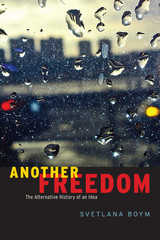
Another Freedom
The Alternative History of an Idea
Svetlana Boym
University of Chicago Press, 2010
The word “freedom” is so overly used—and frequently abused—that it is always in danger of becoming nothing but a cliché. In Another Freedom, Svetlana Boym offers us a refreshing new portrait of the age-old concept. Exploring the rich cross-cultural history of the idea of freedom, from its origins in ancient Greece to the present day, she argues that our attempts to imagine freedom should occupy the space of not only “what is” but also “what if.” Beginning with notions of sacrifice and the emergence of a public sphere for politics and art, Boym expands her account to include the relationships between freedom and liberation, modernity and terror, and political dissent and creative estrangement. While depicting a world of differences, she affirms lasting solidarities based on the commitment to the passionate thinking that reflections on freedom require. To do so, Boym assembles a remarkable cast of characters: Aeschylus and Euripides, Kafka and Mandelstam, Arendt and Heidegger, and a virtual encounter between Dostoevsky and Marx on the streets of Paris.
By offering a fresh look at the strange history of this idea, Another Freedom delivers a nuanced portrait of freedom, one whose repercussions will be felt well into the future.
By offering a fresh look at the strange history of this idea, Another Freedom delivers a nuanced portrait of freedom, one whose repercussions will be felt well into the future.
[more]
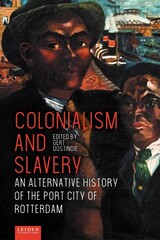
Colonialism and Slavery
An Alternative History of the Port City of Rotterdam
Gert Oostindie
Leiden University Press, 2021
Unlike most city histories, this book focuses exclusively on the city’s connections with colonialism and slavery. Rotterdam, the second-largest Dutch city, is one of Europe’s leading ports. Its maritime expansion was intrinsically linked to Dutch colonialism, including slave trading and colonial slavery in the Americas, Africa and Asia. This painful history sits uneasily with the city’s modern cosmopolitan image and its large population of ‘new Rotterdammers’ with colonial roots. The present volume provides a summary of the research that has documented this history, with chapters on the contribution of colonial trade to economic development; the city’s involvement in slavery; the role of the urban political elites; the impact on urban development and architecture; the ‘ethical impulse’; colonial art and ethnographic collections; colonial and postcolonial migration; and finally the resonance of this history in postcolonial Rotterdam.
[more]
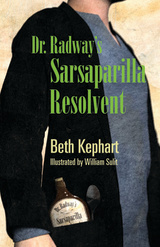
Dr. Radway's Sarsaparilla Resolvent
Beth Kephart
Temple University Press, 2013
Flavored by the oddities of historic personalities and facts, Dr. Radway’s Sarsaparilla Resolvent is set in Bush Hill, Philadelphia, 1871—home to the Baldwin Locomotive Works and a massive, gothic prison. Acclaimed writer Beth Kephart captures the rhythms and smells of an extraordinary era as William Quinn and his Ma, Essie, grapple with life among terrible accidents, miraculous escapes, and shams masquerading as truth.
[more]

Enclosure Architect
A Novel
Douglas W. Milliken
West Virginia University Press, 2024
It seems like a sign of liberation—of adulthood’s indefinite postponement—when Partisans bomb the university and every student’s personal records, from transcripts to debts, are consumed in erasing fire. If nothing else, it lends Margaux the freedom to continue her preferred art form of list-making unfettered by the authority of academia--until she encounters the breakdowns and disappearances and deaths of the people she admires and cherishes most. A monochromatic painter. A BDSM documentary photographer. A transgendered Aphrodite. A mathematician with an invisible cat. Yet as the concrete details of her world dissolve into the abstraction of loss, they also become more rarefied, more essential. Something small enough to be contained. Small enough to be protected.
Set in a semi-fictional, post-industrial American warzone, this novel explores multiple facets related to the recent nonfictional decades of constant civil unrest, with a particular focus on the complicated nature of holding a personal creative life amidst a time of constant violence and change. Despite its heavy themes, the narrative is threaded throughout with veins of absurdist humor that invite and welcome us into the familial warmth of the narrator’s memories of friendship.
Set in a semi-fictional, post-industrial American warzone, this novel explores multiple facets related to the recent nonfictional decades of constant civil unrest, with a particular focus on the complicated nature of holding a personal creative life amidst a time of constant violence and change. Despite its heavy themes, the narrative is threaded throughout with veins of absurdist humor that invite and welcome us into the familial warmth of the narrator’s memories of friendship.
[more]
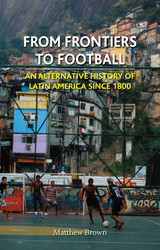
From Frontiers to Football
An Alternative History of Latin America since 1800
Matthew Brown
Reaktion Books, 2014
With Brazil hosting the FIFA World Cup this summer and the Olympic Games in 2016, all eyes are on Latin America. But what vision of these countries will we be given? Will our airwaves be full of cultural stereotypes about Latin Americans and inaccurate interpretations of the region’s position in the world? In From Frontiers to Football, Matthew Brown provides a much-needed historical analysis to rebut misconceptions about Latin America’s past while giving readers the tools with which to understand the region’s complex present.
Telling the story of Latin America’s engagement with global empires from 1800 to today, From Frontiers to Football is as much a narrative of repeated cycles, continued dependency, and thwarted dreams as it is a tale of imperial designs overthrown, colonial armies defeated, and other successes that have inspired colonized peoples across the globe. Brown restores a cultural history to the continent, giving as much attention to pop singer Shakira and retired footballer Pelé as he does to coffee producers, copper miners, government policies, and covert imperialism. Latin America, Brown shows, is no longer a frontier or periphery, but rather is at the forefront of innovation and a global center for social, cultural, and economic activities. Clear and readable, From Frontiers to Football presents a compelling introduction to the history of Latin America’s interactions with the world over the last two centuries.
Telling the story of Latin America’s engagement with global empires from 1800 to today, From Frontiers to Football is as much a narrative of repeated cycles, continued dependency, and thwarted dreams as it is a tale of imperial designs overthrown, colonial armies defeated, and other successes that have inspired colonized peoples across the globe. Brown restores a cultural history to the continent, giving as much attention to pop singer Shakira and retired footballer Pelé as he does to coffee producers, copper miners, government policies, and covert imperialism. Latin America, Brown shows, is no longer a frontier or periphery, but rather is at the forefront of innovation and a global center for social, cultural, and economic activities. Clear and readable, From Frontiers to Football presents a compelling introduction to the history of Latin America’s interactions with the world over the last two centuries.
[more]
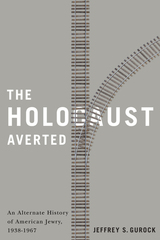
The Holocaust Averted
An Alternate History of American Jewry, 1938-1967
Gurock, Jeffrey S
Rutgers University Press, 2015
The increasingly popular genre of “alternative histories” has captivated audiences by asking questions like “what if the South had won the Civil War?” Such speculation can be instructive, heighten our interest in a topic, and shed light on accepted history. In The Holocaust Averted, Jeffrey Gurock imagines what might have happened to the Jewish community in the United States if the Holocaust had never occurred and forces readers to contemplate how the road to acceptance and empowerment for today’s American Jews could have been harder than it actually was.
Based on reasonable alternatives grounded in what is known of the time, places, and participants, Gurock presents a concise narrative of his imagined war-time saga and the events that followed Hitler’s military failures. While German Jews did suffer under Nazism, the millions of Jews in Eastern Europe survived and were able to maintain their communities. Since few people were concerned with the safety of European Jews, Zionism never became popular in the United States and social antisemitism kept Jews on the margins of society. By the late 1960s, American Jewish communities were far from vibrant.
This alternate history—where, among many scenarios, Hitler is assassinated, Japan does not bomb Pearl Harbor, and Franklin Delano Roosevelt is succeeded after two terms by Robert A. Taft—does cause us to review and better appreciate history. As Gurock tells his tale, he concludes every chapter with a short section that describes what actually happened and, thus, further educates the reader.
This alternate history—where, among many scenarios, Hitler is assassinated, Japan does not bomb Pearl Harbor, and Franklin Delano Roosevelt is succeeded after two terms by Robert A. Taft—does cause us to review and better appreciate history. As Gurock tells his tale, he concludes every chapter with a short section that describes what actually happened and, thus, further educates the reader.
[more]
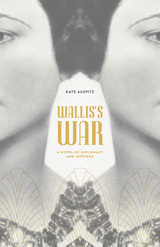
Wallis's War
A Novel of Diplomacy and Intrigue
Kate Auspitz
University of Chicago Press, 2015
Scandalous divorcée. Nazi sympathizer. Style icon. Her Grace the Duchess of Windsor. Such are the many—and many times questionable—monikers of the infamous Wallis Simpson. And with Wallis’s War, Kate Auspitz adds another to this list: unwitting heroine.
The facts: reviled by the British as a social-climbing seductress even as Time magazine named her its 1936 Woman of the Year, Simpson was the American socialite whose affair with King Edward VIII led him to abdicate the throne on the eve of WWII. In this fanciful novel written in the form of a fictional memoir, Auspitz imagines an alternative history in which Simpson was encouraged by Allied statesmen to remove defeatist, pro-German Edward from the throne, forever altering the course of the war. A comically unreliable narrator who knows more than she realizes, and reveals more than she knows, Simpson leads us from historic treaties and military campaigns to dinner parties and cruises as she describes encounters with everyone from Duff and Diana Cooper to Charles Lindbergh, Coco Chanel, and Hitler—all the while acting as a willing but seemingly oblivious pawn of international intrigue.
A rare blend of diplomacy and dalliance, fashion and fascists, this meticulously researched satire offers witty and erudite entertainment and leaves us speculating: who really brought about the abdication and—always—what were they wearing?
The facts: reviled by the British as a social-climbing seductress even as Time magazine named her its 1936 Woman of the Year, Simpson was the American socialite whose affair with King Edward VIII led him to abdicate the throne on the eve of WWII. In this fanciful novel written in the form of a fictional memoir, Auspitz imagines an alternative history in which Simpson was encouraged by Allied statesmen to remove defeatist, pro-German Edward from the throne, forever altering the course of the war. A comically unreliable narrator who knows more than she realizes, and reveals more than she knows, Simpson leads us from historic treaties and military campaigns to dinner parties and cruises as she describes encounters with everyone from Duff and Diana Cooper to Charles Lindbergh, Coco Chanel, and Hitler—all the while acting as a willing but seemingly oblivious pawn of international intrigue.
A rare blend of diplomacy and dalliance, fashion and fascists, this meticulously researched satire offers witty and erudite entertainment and leaves us speculating: who really brought about the abdication and—always—what were they wearing?
[more]
READERS
Browse our collection.
PUBLISHERS
See BiblioVault's publisher services.
STUDENT SERVICES
Files for college accessibility offices.
UChicago Accessibility Resources
home | accessibility | search | about | contact us
BiblioVault ® 2001 - 2024
The University of Chicago Press









